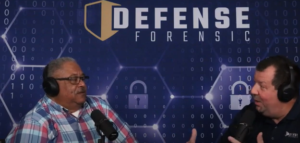E-discovery is an integral part of modern litigation and often necessary to navigate the masses of data to find evidence, so it is an important process to get right. Unfortunately, e-discovery expenses can quickly add up and account for a sizable portion of a case’s budget. In today’s article, I will discuss strategies for reducing e-discovery expenses and making the process more cost-effective. In addition to data reduction, other cost saving approaches include establishing clear production guidelines, utilizing technology-assisted review software, and maintaining effective communication with opposing counsel.
Why e-discovery can be expensive
E-discovery is a complex and time-consuming process, often resulting in high costs. These costs add up quickly when large quantities of data need to be collected, preserved, and then reviewed for relevance and privilege, which means that the process of identifying relevant evidence can be arduous and time-consuming. The cost of e-discovery can increase rapidly if not managed effectively, therefore it is crucial to identify cost-saving strategies while maintaining the quality of the discovery process.
A well-conceived plan can play a significant role in alleviating some of the high costs involved in e-discovery. Establishing clear and specific protocols will streamline efficiency and ensure the e-discovery process runs smoothly.
Strategies to Reduce Data Review
One of the principal methods of cutting e-discovery expenses is through data reduction. The idea is to decrease the number of files that need to be reviewed, minimizing the amount of work involved. This can be done using several methods, to include culling by date range or custodian, searching for specific terms, and by employing technology-assisted review. This strategy specifically focuses on reducing the size of the data set being analyzed.
Establishing clear production guidelines
Clear and conceivable production guidelines prevent misunderstandings and disputes, saving time and money. Guidelines should detail what is relevant and discoverable, the format of the production, and confidentiality concerns. Attorneys should agree on these protocols with opposing counsel, particularly confidentiality obligations and expectations regarding the discovery process.
Technology-Assisted Review
Technology-assisted review software employs artificial intelligence to review, classify, and prioritize documents to be reviewed by humans. This method can reduce the cost, time, and man-hours associated with these types of reviews, in turn significantly reducing e-discovery expenses. Using this approach can automate much of the work involved in the document review process while increasing the accuracy and efficiency of the legal process.
Communication with Opposing Counsel
Effective communication is of utmost importance when seeking to reduce e-discovery expenses. Counsel must agree to a protocol regarding what information must be shared, how it will be shared, and when. A clear and concise message helps prevent confusion and ensures the legal process runs smoothly. Regular communication between parties not only increases transparency and honesty in the discovery process but also reduces the risk of disputes.
Conclusion
In conclusion, e-discovery is a core aspect of modern litigation, and while it can be expensive, there are several ways to make it cost-effective. By employing the methods discussed in this article, both parties will reduce legal fees, time, and stress associated with the e-discovery process. Efficient and cost-effective e-discovery offers clients peace of mind, allowing the development of stronger cases while managing costs.





